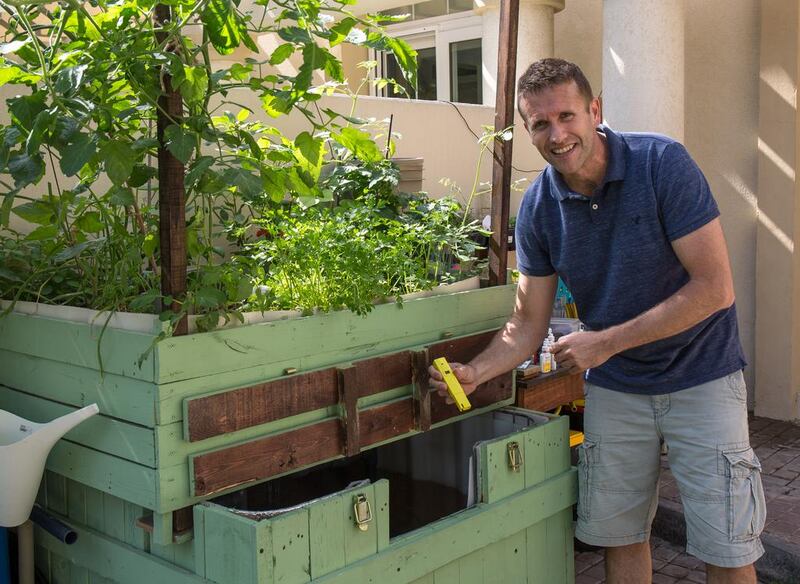Jason Renoux has captured the current zeitgeist for aquaponics. The Dubai-based French scuba-diving instructor was already familiar with the ways of fish in his professional life and had a growing interest in cultivating organic vegetables and salads in the garden of his Springs home, which segued into him building an impressive domestic aquaponics project.
Growing food hydroponically and aquaponically in an environment where soil type and access to clean water present obvious challenges makes obvious sense. The Masdar Institute in Abu Dhabi is already involved in large-scale aquaculture and recently opened the world’s first research facility to grow food and fuel. The UAE currently imports about 90 per cent of its food, and with imported food prices projected to rise significantly over the next decade, sustainable food security is high on the agenda.
Aquaponics and hydroponics are similar in that plants are sustained and grown in nutrient rich solutions, without soil. Renoux explains the downside of hydroponic systems: “Every once in a while, the water becomes saturated with the salts and chemicals that are added, and the water has to be discarded – so it’s not truly sustainable.”
Aquaponics, on the other hand, introduces fish into a self-sustaining ecosystem that does away with the need to dump water or add additional nutrients for plants. Instead, water levels need to be topped up periodically, fish must be fed and water pH levels tested from time to time.

Jason Renoux’s home aquaponics system. Victor Besa for The National
Put simply, fish in water produce waste, microbes in the water then covert this waste into fertiliser for plants, which in turn feed off this water and filter it, so that when it’s pumped back to the tank holding the fish, it has been cleaned by the plants – and the cycle then continues. The only addition is protein-rich fish food to sustain aquatic life and, occasionally, soluble iron to balance the water. Nature, with the help of a couple of pumps, does the rest.
Renoux researched his DIY aquaponics project online and also read Teaming With Microbes: The Organic Gardener's Guide to the Soil Food Web by Jeff Lowenfels and Wayne Lewis to understand the key criteria for successful plant growth. Most of what he needed was purchased from pet shops servicing fish fanciers, garden centres and DIY stores.
Unfortunately, he drew a blank when trying to sources edible tilapia fish locally, so he settled on comet goldfish from a pet store and a single koi from Dragon Mart to stock his prototype.
Other fish breeds also work; just research the ratio of fish body mass to water, to work out what’s sustainable,” he advises. “It’s very simple to build. I’m not a DIY guy, but I know how to use my hands.”
The system is constructed around a repurposed intermediate bulk container (IBC), which he bought second-hand on Dubizzle (new, they cost from Dh1,200 to Dh1,300). He cut off the top and flipped it to create the grow bed, leaving the lower portion for the fish. He also applied a layer of insulation to the tank to help keep water temperatures consistent.
IBCs are used for the transportation of a wide variety of products, so Renoux suggests that unless a container’s history can be guaranteed 100 per cent, then don’t buy one second-hand.
“If it had previously been used for the transportation of an industrial chemical, it could potentially contaminate the entire aquaponics system,” he says. “It’s better to seek containers that are used for the food trade and washed out.”
The wooden casing, which holds the fish tank and grow bed, is clad in recycled wood, and painted a vintage Farrow & Ball shade of green. Part of the brief given by Renoux’s wife was that “it shouldn’t be ugly”, but considering he’s been given domestic authorisation to “put in another”, he’s already counting his first effort as an aesthetic success story.
Renoux has started a blog to share his home-based aquaponic journey at www.dubaiaquaponics.com.
homes@thenational.ae





